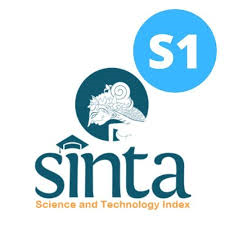MOSSES OF GUNUNG HALIMUN NATIONAL PARK, WEST JAVA, INDONESIA
Abstract
Keywords
Full Text:
PDFReferences
BARTRAM, E.B. 1939. Mosses of the Philippines.Philipp. J. Sci. 68: 1-422.
CRUM, H.A. 1959.A small collection of West Javanese mosses. Bryologist 62: 188-190.
DAMANHURI, A. & MOHAMED, M.A.H. 1986. Two new species of Distichophyllum from Malaya. J. Bryol. 14: 327-331.
DIXON, H.N. 1935. A contribution to the moss flora of Borneo. J. Linn. Soc. Bot. 50: 57-140. FLEISCHER, M. 1904-1923. Die Musci der Flora von Buitenzorg. Vols. 1-4. Leiden.
HARADA, K. et al. 2003. Taman Nasional, Gunung Halimun National Park. LIPI-BCP-JICA-PKA Dephutbun, 55 pp.
JIA, Y. & WU, P.-C. 2004. Hypnobryales Sematophyllaceae, pp. 84-86. In: P.-C. Wu and Y. Jia (eds.). Bryoflora of China, vol. 8.Science Publisher, Beijing(Chinese edition).
LI, Z.-H. & IWATSUKI, Z. 2001. Fissidentaceae, pp. 3-67. In: Li X.-J. and M. Crosby (eds.).Moss Flora of China (English version), vol. 2. Fissidentaceae – Ptychomitriaceae. Science Press, Beijing, and Missouri Botanical Gardens, St. Louis.
MÖLLER, VON HJALMAR. 1919. Beiträge zur Moosflora Javas, Straits Settlements und Birmas. Hedwigia 60: 313-330.
NOGUCHI, A. 1994. Illustrated Moss Flora of Japan. Part 5.Hattori Botanical Laboratory, Nichinan. PANCHO, J.V. 1979. Some bryophytes in tea plantations, Pagilaran, Central Java. BIOTROP Bull. 11: 279-282.
REESE, W.D. & Lin, P.-J. 1991. A monograph of the Calymperaceae of China. J. Hattori Bot. Lab. 69: 323-372. TAN, B.C. & IWATSUKI, Z. 1992. Lectotypification of Clastobryum indicum and C. conspicuum. Hikobia 11: 147-152.
TAN, B.C. & JIA, Y. 1999. A preliminary revision of Chinese Sematophyllaceae. J. Hattori Bot. Lab. 86: 1-70.
TAN, B.C. & ROBINSON, H. 1990. A review of Philippine Hookeriaceous taxa (Musci). Smithsonian Contr. Bot. 75: 1-41.
TRIONO, TEGUH et al. 2002. A guide to Cikaniki Citalahab Looptrail, Gunung Halimun National Park, West Java, Indonesia. LIPI-BCP-JICA-PKA Dephutbun, 35 pp.
TIXIER, P. 1988. Le genre Glossadelphus Fleisch. (Sematophyllaceae, Musci) et sa valeur. NovaHedwigia 46: 319-356.
Refbacks
- There are currently no refbacks.









